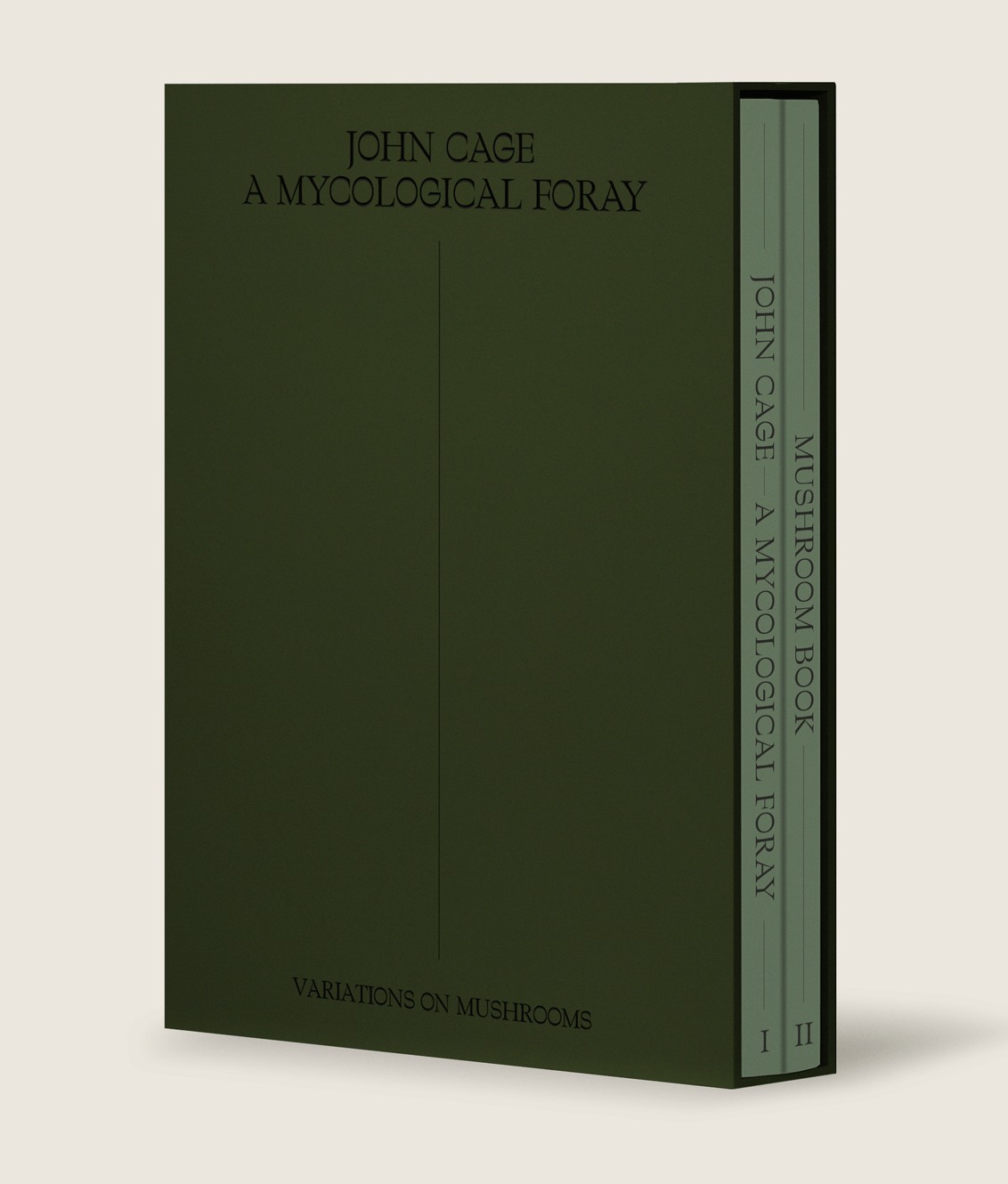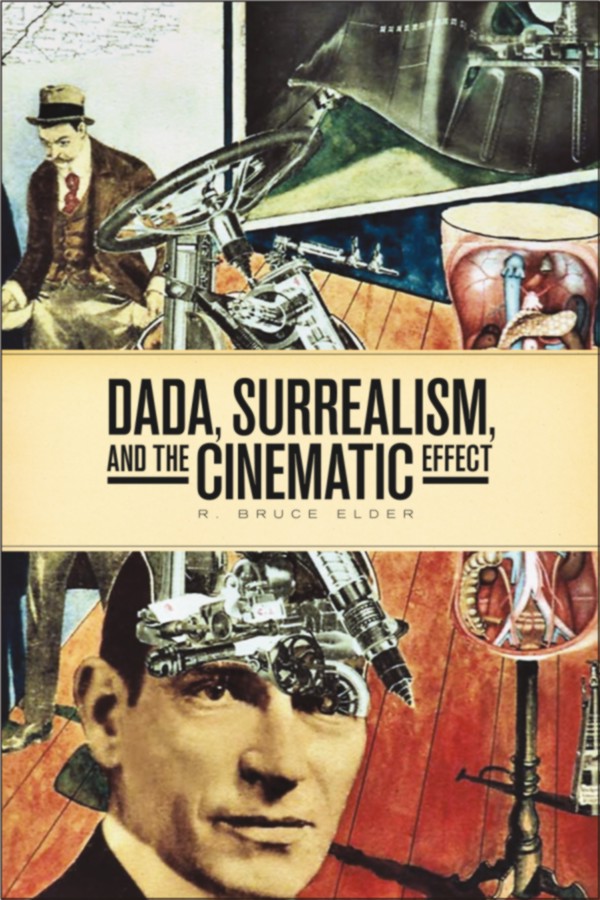John Cage: A Mycological Foray – Variations on Mushrooms, 2 vols. (1972/2020)
Filed under artist publishing, book | Tags: · chance, composing, composition, ecology, mushrooms, music, sound

“John Cage: A Mycological Foray draws readers across the idiosyncratic, mushroom-suffused, innermost landscape of celebrated American composer John Cage. Upon the remarkable journey with Cage, one encounters assorted photographs, compositions, and contemplations; all in the very same unexpected fashion one encounters various flora and fungi species while mushroom foraging.
Volume I encompasses Cage’s mycological-oriented Indeterminacy stories, Diary excerpts, and essays; and the complete transcript of Cage’s 1983 performance, MUSHROOMS et Variationes.”
Volume II offers the inaugural reproduction of Cage’s 1972 portfolio, Mushroom Book, printed in 1972 in the limited run of 75 copies. The book is a study of fifteen different species of mushrooms, and each folio includes Cage’s poetry, sketches, and drawings (placed on the page by chance operations); scientific information about the mushrooms by Alexander H. Smith; and botanical illustrations by Lois Long.
John Cage: A Mycological Foray is developed in collaboration with the John Cage Trust.
With essay by Kingston Trinder and texts by Isabelle Bucklow.
Edited by Ananda Pellerin
Publisher Atelier Éditions, New York, 2020
ISBN 1733622004, 9781733622004
224 pages
via Alexandra Fanning, HT Georges Vantongerloo
PDF (watermarked file from publisher’s Dropbox, contains both volumes; no longer available as of 2 July 2020)
Comments (9)Matthew Fuller, Olga Goriunova: Bleak Joys: Aesthetics of Ecology and Impossibility (2019)
Filed under book | Tags: · aesthetics, animal, chance, ecology, environment, ethics, forest, individuation, nature, philosophy, plants, subject, territory, theory, virtuality

“Bleak Joys develops an understanding of complex entities and processes—from plant roots to forests to ecological damage and its calculation—as aesthetic. It is also a book about “bad” things, such as anguish and devastation, which relate to the ecological and technical but are also constitutive of politics, the ethical, and the formation of subjects.
Avidly interdisciplinary, Bleak Joys draws on scientific work in plant sciences, computing, and cybernetics, as well as mathematics, literature, and art in ways that are not merely illustrative of but foundational to our understanding of ecological aesthetics and the condition in which the posthumanities are being forged. It places the sensory world of plants next to the generalized and nonlinear infrastructure of irresolvability—the economics of indifference up against the question of how to make a home on Planet Earth in a condition of damaged ecologies. Crosscutting chapters on devastation, anguish, irresolvability, luck, plant, and home create a vivid and multifaceted approach that is as remarkable for its humor as for its scholarly complexity.
Engaging with Deleuze, Guattari, and Bakhtin, among others, Bleak Joys captures the modes of crises that constitute our present ecological and political condition, and reckons with the means by which they are not simply aesthetically known but aesthetically manifest.”
Publisher University of Minnesota Press, Minneapolis, 2019
Posthumanities series, 53
ISBN 9781517905521, 1517905524
xxviii+192 pages
PDF (6 MB)
Comment (0)R. Bruce Elder: Dada, Surrealism, and the Cinematic Effect (2013)
Filed under book | Tags: · alchemy, art history, avant-garde, chance, cinema, collage, consciousness, dada, dreams, film, film history, language, mathematics, occultism, sexuality, spiritualism, surrealism, theory

“This book deals with the early intellectual reception of the cinema and the manner in which art theorists, philosophers, cultural theorists, and especially artists of the first decades of the twentieth century responded to its advent. While the idea persists that early writers on film were troubled by the cinema’s lowly form, this work proposes that there was another, largely unrecognized, strain in the reception of it. Far from anxious about film’s provenance in popular entertainment, some writers and artists proclaimed that the cinema was the most important art for the moderns, as it exemplified the vibrancy of contemporary life.
This view of the cinema was especially common among those whose commitments were to advanced artistic practices. Their notions about how to recast the art media (or the forms forged from those media’s materials) and the urgency of doing so formed the principal part of the conceptual core of the artistic programs advanced by the vanguard art movements of the first half of the twentieth century. This book, a companion to the author’s previous, Harmony & Dissent, examines the Dada and Surrealist movements as responses to the advent of the cinema.”
Publisher Wilfrid Laurier University Press, Waterloo, 2013
Film and Media Studies series
ISBN 9781554586257, 1554586259
x+765 pages
Reviews: John W. Locke (Canadian J of Film Studies 2014), Robin Walz (Canadian J of History 2014), Bart Testa (U Toronto Quarterly 2015).
PDF (8 MB, updated on 2019-12-14)
EPUB (added on 2019-12-14)

